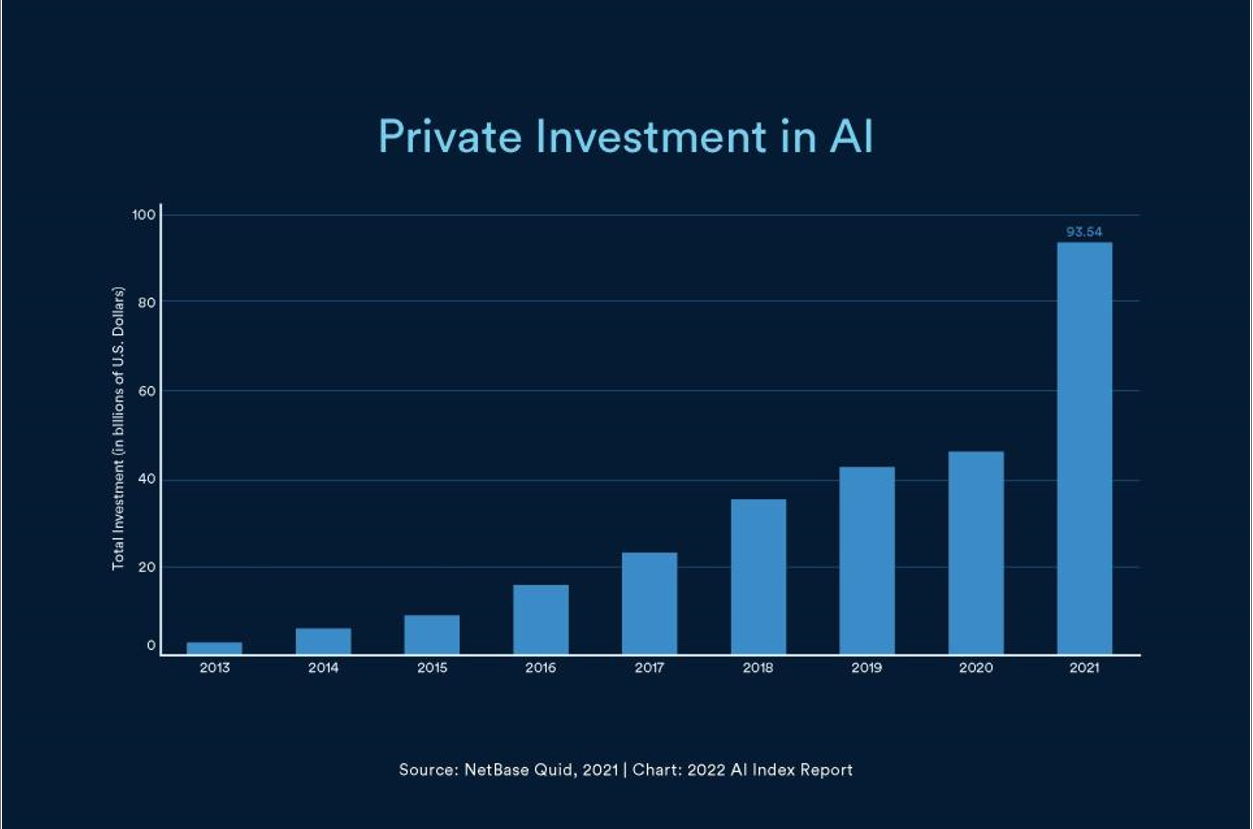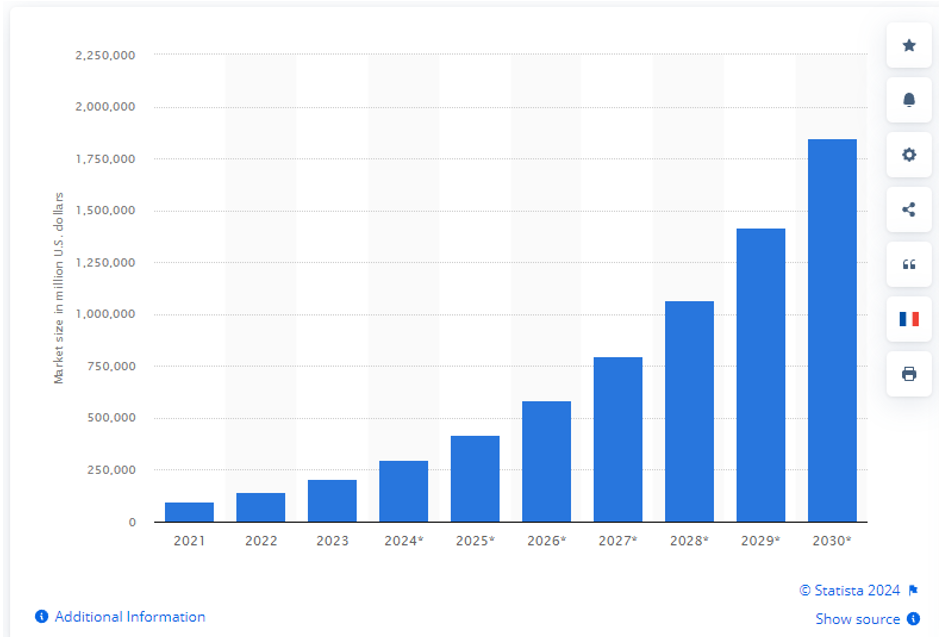by Bryan Perry
January 30, 2024
After such a strong (+19%) move higher in the past three months, many professional investors are asking what keeps this market rising. First off, it is key economic data and bullish forward sales and earnings guidance that comes in at, or better than, Wall Street forecasts. Of the stocks that make up the Magnificent Seven, only Tesla Inc. (TSLA) has reported quarterly results that miss on both the top and bottom line, while providing opaque guidance, with the stock trading down on the news .
Based on Wall Street estimates, it appears the other six Mag-7 companies will post strong results. As to whether they will satisfy the Street wholly depends on forward guidance. One would think that there will be a replacement in the Mag-7 for Mr. Musk’s EV company, of which there are a couple of heavyweights that come to mind, but again, we’ll see which company occupies that slot after this earnings season ends.
U.S. stocks traded to new record highs last week as stronger-than-forecast Q4 earnings were posted by a few mega-cap tech stocks, coupled with continuing investor optimism surrounding artificial intelligence.
There is a growing belief that the amazing demand for AI chips from the hyper-scalers is just the beginning of a multi-year transformation of nearly every industry in the economy. This growing bullish sentiment surrounding AI is, in my view, legitimate, supported by emerging data regarding its application.
Some argue that AI is a bigger transformation than the internet itself, because it can affect every aspect of human life and society, from health care to education to entertainment. Others contend that the internet is still more transformative because it enabled the global connectivity and information access that made AI possible in the first place. But there is little argument that the application of AI on businesses will have huge positive impacts on productivity and efficiency while being enormously accretive to global GDP.
According to estimates by McKinsey (What works for digital and AI transformations?): “AI could add up to $13 trillion to the global economy by 2030, which is comparable to the impact of the internet in the past two decades. AI could also boost productivity by up to 40 percent, and generate up to $9 trillion in annual value from innovation. However, AI also poses significant challenges and risks, such as ethical dilemmas, job displacement, and security threats, that require careful governance and regulation.”

Graphs are for illustrative and discussion purposes only. Please read important disclosures at the end of this commentary.
When I typed, “What will AI bring to businesses?” into ChatGPT, this is the answer it gave me:
Artificial intelligence (AI) is transforming businesses in many ways, such as improving efficiency, productivity, customer service, cybersecurity, fraud management, and content production. AI can also help businesses make better decisions, reach larger audiences, and customize their offerings.
Here are some examples of how AI is used in different business domains:
- Customer service: AI-powered chatbots can provide instant and personalized responses to customers’ queries, reducing the need for human agents and increasing customer satisfaction. AI can also analyze customer feedback and behavior to improve products and services.
- Cybersecurity and fraud management: AI can detect and prevent cyberattacks, malware, phishing, and other threats by analyzing large amounts of data and identifying patterns and anomalies. AI can also help businesses verify identities, authenticate transactions, and monitor fraud risks.
- Content production: AI can generate high-quality and engaging content for various purposes, such as marketing, internal communications, product descriptions, and social media posts. AI can also translate content into different languages and optimize it for search engines and audiences.
- Inventory management: AI can optimize inventory levels, reduce waste, and increase sales by forecasting demand, managing supply chains, and recommending products. AI can also automate tasks such as ordering, tracking, and replenishing inventory.
- Recruitment and talent sourcing: AI can help businesses find and hire the best candidates by screening resumes, conducting interviews, and assessing skills and fit. AI can also improve employee retention, performance, and satisfaction by providing feedback, training, and career development opportunities.
- Machine learning (ML) is a branch of AI that enables machines to learn from data and improve their performance without explicit programming. ML can be used for tasks such as predictive maintenance, quality assurance, process optimization, and generative design.
- Deep learning (DL) is a subset of ML that uses artificial neural networks to model complex patterns and relationships in data. DL can be used for tasks such as image recognition, natural language processing, speech recognition, and computer vision.
- Reinforcement learning (RL) is a type of ML that trains machines to learn from their own actions and feedback. RL can be used for tasks such as robotics, self-driving cars, and game playing.

Graphs are for illustrative and discussion purposes only. Please read important disclosures at the end of this commentary.
The greatest and most impactful changes will be created from Machine Learning (ML) AI.
According to Next Move Strategy Consulting, the market for artificial intelligence is expected to show strong growth in the coming decade. Its value of nearly $100 billion is expected to grow 20-fold by 2030.

Graphs are for illustrative and discussion purposes only. Please read important disclosures at the end of this commentary.
The AI market covers a vast number of industries, everything from supply chains, marketing, product making, research, analysis, and fields that will in some aspect adopt AI within their business structures.
To summarize, the rally to new highs for the Dow, S&P and Nasdaq is supported by the Fed being done with rate hikes, inflation trending lower, capex spending expected to rise this year, improving consumer sentiment, a presidential election year, and the widening optimism and understanding of what AI means to future corporate revenue and earnings growth. While there might be market corrections stemming from geopolitical and financial risks that make headlines every day, the future of AI is clearly vast.
The AI-led rally of 2023 is still leading the market in 2024, and many leading AI stocks have enjoyed big moves higher. Any major market pullbacks will create buying opportunities in what looks to be a multi-year massive spending cycle on AI technology. Anyone who missed out on fortunes made from internet stocks may have a fantastic opportunity to cash in on the exponential growth of AI going forward.
Navellier & Associates, A few clients own Tesla (TSLA), per client request in managed accounts. Bryan Perry does not own Tesla (TSLA), personally.
All content above represents the opinion of Bryan Perry of Navellier & Associates, Inc.
Also In This Issue
A Look Ahead by Louis Navellier
Biden’s Clueless Energy Policies May Cost Him Re-Election
Income Mail by Bryan Perry
Sizing Up the New AI-Driven Rally
Growth Mail by Gary Alexander
Ignore All January Indicators, Santa Claus Rallies and Super Bowl Winners
Global Mail by Ivan Martchev
The January Barometer Holds 2024 Promise
Sector Spotlight by Jason Bodner
Market Secrets From “Another Planet”
View Full Archive
Read Past Issues Here

Bryan Perry
SENIOR DIRECTOR
Bryan Perry is a Senior Director with Navellier Private Client Group, advising and facilitating high net worth investors in the pursuit of their financial goals.
Bryan’s financial services career spanning the past three decades includes over 20 years of wealth management experience with Wall Street firms that include Bear Stearns, Lehman Brothers and Paine Webber, working with both retail and institutional clients. Bryan earned a B.A. in Political Science from Virginia Polytechnic Institute & State University and currently holds a Series 65 license. All content of “Income Mail” represents the opinion of Bryan Perry
Important Disclosures:
Although information in these reports has been obtained from and is based upon sources that Navellier believes to be reliable, Navellier does not guarantee its accuracy and it may be incomplete or condensed. All opinions and estimates constitute Navellier’s judgment as of the date the report was created and are subject to change without notice. These reports are for informational purposes only and are not a solicitation for the purchase or sale of a security. Any decision to purchase securities mentioned in these reports must take into account existing public information on such securities or any registered prospectus.To the extent permitted by law, neither Navellier & Associates, Inc., nor any of its affiliates, agents, or service providers assumes any liability or responsibility nor owes any duty of care for any consequences of any person acting or refraining to act in reliance on the information contained in this communication or for any decision based on it.
Past performance is no indication of future results. Investment in securities involves significant risk and has the potential for partial or complete loss of funds invested. It should not be assumed that any securities recommendations made by Navellier. in the future will be profitable or equal the performance of securities made in this report. Dividend payments are not guaranteed. The amount of a dividend payment, if any, can vary over time and issuers may reduce dividends paid on securities in the event of a recession or adverse event affecting a specific industry or issuer.
None of the stock information, data, and company information presented herein constitutes a recommendation by Navellier or a solicitation to buy or sell any securities. Any specific securities identified and described do not represent all of the securities purchased, sold, or recommended for advisory clients. The holdings identified do not represent all of the securities purchased, sold, or recommended for advisory clients and the reader should not assume that investments in the securities identified and discussed were or will be profitable.
Information presented is general information that does not take into account your individual circumstances, financial situation, or needs, nor does it present a personalized recommendation to you. Individual stocks presented may not be suitable for every investor. Investment in securities involves significant risk and has the potential for partial or complete loss of funds invested. Investment in fixed income securities has the potential for the investment return and principal value of an investment to fluctuate so that an investor’s holdings, when redeemed, may be worth less than their original cost.
One cannot invest directly in an index. Index is unmanaged and index performance does not reflect deduction of fees, expenses, or taxes. Presentation of Index data does not reflect a belief by Navellier that any stock index constitutes an investment alternative to any Navellier equity strategy or is necessarily comparable to such strategies. Among the most important differences between the Indices and Navellier strategies are that the Navellier equity strategies may (1) incur material management fees, (2) concentrate its investments in relatively few stocks, industries, or sectors, (3) have significantly greater trading activity and related costs, and (4) be significantly more or less volatile than the Indices.
ETF Risk: We may invest in exchange traded funds (“ETFs”) and some of our investment strategies are generally fully invested in ETFs. Like traditional mutual funds, ETFs charge asset-based fees, but they generally do not charge initial sales charges or redemption fees and investors typically pay only customary brokerage fees to buy and sell ETF shares. The fees and costs charged by ETFs held in client accounts will not be deducted from the compensation the client pays Navellier. ETF prices can fluctuate up or down, and a client account could lose money investing in an ETF if the prices of the securities owned by the ETF go down. ETFs are subject to additional risks:
- ETF shares may trade above or below their net asset value;
- An active trading market for an ETF’s shares may not develop or be maintained;
- The value of an ETF may be more volatile than the underlying portfolio of securities the ETF is designed to track;
- The cost of owning shares of the ETF may exceed those a client would incur by directly investing in the underlying securities; and
- Trading of an ETF’s shares may be halted if the listing exchange’s officials deem it appropriate, the shares are delisted from the exchange, or the activation of market-wide “circuit breakers” (which are tied to large decreases in stock prices) halts stock trading generally.
Grader Disclosures: Investment in equity strategies involves substantial risk and has the potential for partial or complete loss of funds invested. The sample portfolio and any accompanying charts are for informational purposes only and are not to be construed as a solicitation to buy or sell any financial instrument and should not be relied upon as the sole factor in an investment making decision. As a matter of normal and important disclosures to you, as a potential investor, please consider the following: The performance presented is not based on any actual securities trading, portfolio, or accounts, and the reported performance of the A, B, C, D, and F portfolios (collectively the “model portfolios”) should be considered mere “paper” or pro forma performance results based on Navellier’s research.
Investors evaluating any of Navellier & Associates, Inc.’s, (or its affiliates’) Investment Products must not use any information presented here, including the performance figures of the model portfolios, in their evaluation of any Navellier Investment Products. Navellier Investment Products include the firm’s mutual funds and managed accounts. The model portfolios, charts, and other information presented do not represent actual funded trades and are not actual funded portfolios. There are material differences between Navellier Investment Products’ portfolios and the model portfolios, research, and performance figures presented here. The model portfolios and the research results (1) may contain stocks or ETFs that are illiquid and difficult to trade; (2) may contain stock or ETF holdings materially different from actual funded Navellier Investment Product portfolios; (3) include the reinvestment of all dividends and other earnings, estimated trading costs, commissions, or management fees; and, (4) may not reflect prices obtained in an actual funded Navellier Investment Product portfolio. For these and other reasons, the reported performances of model portfolios do not reflect the performance results of Navellier’s actually funded and traded Investment Products. In most cases, Navellier’s Investment Products have materially lower performance results than the performances of the model portfolios presented.
This report contains statements that are, or may be considered to be, forward-looking statements. All statements that are not historical facts, including statements about our beliefs or expectations, are “forward-looking statements” within the meaning of The U.S. Private Securities Litigation Reform Act of 1995. These statements may be identified by such forward-looking terminology as “expect,” “estimate,” “plan,” “intend,” “believe,” “anticipate,” “may,” “will,” “should,” “could,” “continue,” “project,” or similar statements or variations of such terms. Our forward-looking statements are based on a series of expectations, assumptions, and projections, are not guarantees of future results or performance, and involve substantial risks and uncertainty as described in Form ADV Part 2A of our filing with the Securities and Exchange Commission (SEC), which is available at www.adviserinfo.sec.gov or by requesting a copy by emailing info@navellier.com. All of our forward-looking statements are as of the date of this report only. We can give no assurance that such expectations or forward-looking statements will prove to be correct. Actual results may differ materially. You are urged to carefully consider all such factors.
FEDERAL TAX ADVICE DISCLAIMER: As required by U.S. Treasury Regulations, you are informed that, to the extent this presentation includes any federal tax advice, the presentation is not written by Navellier to be used, and cannot be used, for the purpose of avoiding federal tax penalties. Navellier does not advise on any income tax requirements or issues. Use of any information presented by Navellier is for general information only and does not represent tax advice either express or implied. You are encouraged to seek professional tax advice for income tax questions and assistance.
IMPORTANT NEWSLETTER DISCLOSURE:The hypothetical performance results for investment newsletters that are authored or edited by Louis Navellier, including Louis Navellier’s Growth Investor, Louis Navellier’s Breakthrough Stocks, Louis Navellier’s Accelerated Profits, and Louis Navellier’s Platinum Club, are not based on any actual securities trading, portfolio, or accounts, and the newsletters’ reported hypothetical performances should be considered mere “paper” or proforma hypothetical performance results and are not actual performance of real world trades. Navellier & Associates, Inc. does not have any relation to or affiliation with the owner of these newsletters. There are material differences between Navellier Investment Products’ portfolios and the InvestorPlace Media, LLC newsletter portfolios authored by Louis Navellier. The InvestorPlace Media, LLC newsletters contain hypothetical performance that do not include transaction costs, advisory fees, or other fees a client might incur if actual investments and trades were being made by an investor. As a result, newsletter performance should not be used to evaluate Navellier Investment services which are separate and different from the newsletters. The owner of the newsletters is InvestorPlace Media, LLC and any questions concerning the newsletters, including any newsletter advertising or hypothetical Newsletter performance claims, (which are calculated solely by Investor Place Media and not Navellier) should be referred to InvestorPlace Media, LLC at (800) 718-8289.
Please note that Navellier & Associates and the Navellier Private Client Group are managed completely independent of the newsletters owned and published by InvestorPlace Media, LLC and written and edited by Louis Navellier, and investment performance of the newsletters should in no way be considered indicative of potential future investment performance for any Navellier & Associates separately managed account portfolio. Potential investors should consult with their financial advisor before investing in any Navellier Investment Product.
Navellier claims compliance with Global Investment Performance Standards (GIPS). To receive a complete list and descriptions of Navellier’s composites and/or a presentation that adheres to the GIPS standards, please contact Navellier or click here. It should not be assumed that any securities recommendations made by Navellier & Associates, Inc. in the future will be profitable or equal the performance of securities made in this report.
FactSet Disclosure: Navellier does not independently calculate the statistical information included in the attached report. The calculation and the information are provided by FactSet, a company not related to Navellier. Although information contained in the report has been obtained from FactSet and is based on sources Navellier believes to be reliable, Navellier does not guarantee its accuracy, and it may be incomplete or condensed. The report and the related FactSet sourced information are provided on an “as is” basis. The user assumes the entire risk of any use made of this information. Investors should consider the report as only a single factor in making their investment decision. The report is for informational purposes only and is not intended as an offer or solicitation for the purchase or sale of a security. FactSet sourced information is the exclusive property of FactSet. Without prior written permission of FactSet, this information may not be reproduced, disseminated or used to create any financial products. All indices are unmanaged and performance of the indices include reinvestment of dividends and interest income, unless otherwise noted, are not illustrative of any particular investment and an investment cannot be made in any index. Past performance is no guarantee of future results.
